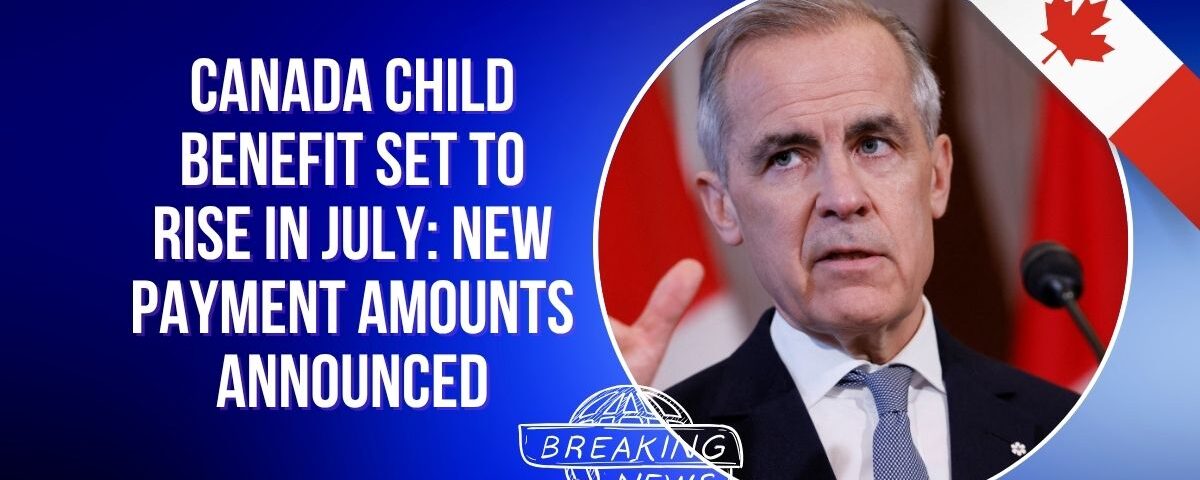As Canadian families prepare their summer finances, there’s good news on the horizon — the Canada Child Benefit (CCB) will receive a notable boost in July 2025. This yearly increase, driven by inflation rates, ensures that families continue to receive the financial support they need to cope with rising living costs.
This comprehensive guide outlines the new payment rates, eligibility criteria, and the overall impact of the updated benefit on Canadian households.
Why the Canada Child Benefit Rises Annually
The CCB is indexed to inflation, meaning its rates are adjusted every July in line with the Consumer Price Index (CPI). This mechanism is in place to help families keep up with essential expenses, such as food, clothing, and education.
Due to persistent inflation in 2024 across several economic sectors, the 2025 CCB increase is larger than usual. This adjustment isn’t just procedural — it offers critical financial relief to many households across the country.
Canada Child Benefit 2025 – Updated Payment Amounts
Below are the maximum annual and monthly CCB payments based on a child’s age:
| Child’s Age | Maximum Annual Benefit | Monthly Payment |
|---|---|---|
| Under 6 years old | $7,873 | $656.08 |
| Ages 6 to 17 | $6,655 | $554.58 |
These amounts represent the maximum benefit available. The actual payment is calculated based on your Adjusted Family Net Income (AFNI) reported in your 2024 tax return. Higher-income families will receive lower payments due to a tiered reduction structure.
Eligibility for the 2025 CCB Increase
To receive the enhanced 2025 Canada Child Benefit, applicants must meet the following criteria:
- Be a Canadian resident
- Live with a child under 18 years
- Be the primary caregiver for the child
- Have filed a 2024 income tax return
Both biological and adoptive parents, as well as legal guardians, are eligible. Newcomers to Canada may also qualify once residency requirements are satisfied.
Payment Dates and Delivery Method
The Canada Child Benefit is usually distributed on the 20th of each month. However, in July 2025, the payment will be made on Monday, July 22, since the 20th falls on a weekend.
To receive payments on time:
- Sign up for direct deposit via the CRA
- Ensure your marital status and income are up to date
- Report any life changes promptly to avoid delays or incorrect amounts
Mailed cheques may arrive a few days later than direct deposits.
What the CCB Increase Means for Families
This year’s increase in the Canada Child Benefit provides valuable financial relief for many households. For example, a family with two children under six will receive an extra $272 annually, which could help cover school supplies, camp fees, or grocery expenses.
Additionally, the enhanced benefit supports broader poverty reduction efforts. According to Statistics Canada, the CCB has played a vital role in lifting hundreds of thousands of children out of poverty since its introduction in 2016.
Conclusion
The 2025 Canada Child Benefit increase is more than just a routine adjustment — it’s a strategic response to rising costs and a powerful tool for supporting Canadian families. Eligible households should review their CRA profiles and ensure their 2024 tax filings are complete to take full advantage of this increased support. Whether you’re managing daily expenses or planning for the months ahead, this benefit remains a cornerstone of financial security for millions of Canadians.
Frequently Asked Questions
1. When will I receive the July 2025 Canada Child Benefit payment?
The payment will be made on Monday, July 22, 2025, as the regular date (July 20) falls on a weekend.
2. How do I update my income or marital status for CCB?
You can update this information through your CRA My Account online or by contacting the Canada Revenue Agency directly.
3. Can newcomers to Canada receive the CCB?
Yes, once residency and tax requirements are met, newcomers with eligible children can receive the Canada Child Benefit.
4. Do both parents need to apply for the CCB?
Only the primary caregiver needs to apply. Usually, this is the person who is mainly responsible for the child’s upbringing.
5. Will the benefit amount stay the same every month?
If your income, marital status, or custody arrangement doesn’t change, your monthly payments will remain stable until the next July adjustment.

